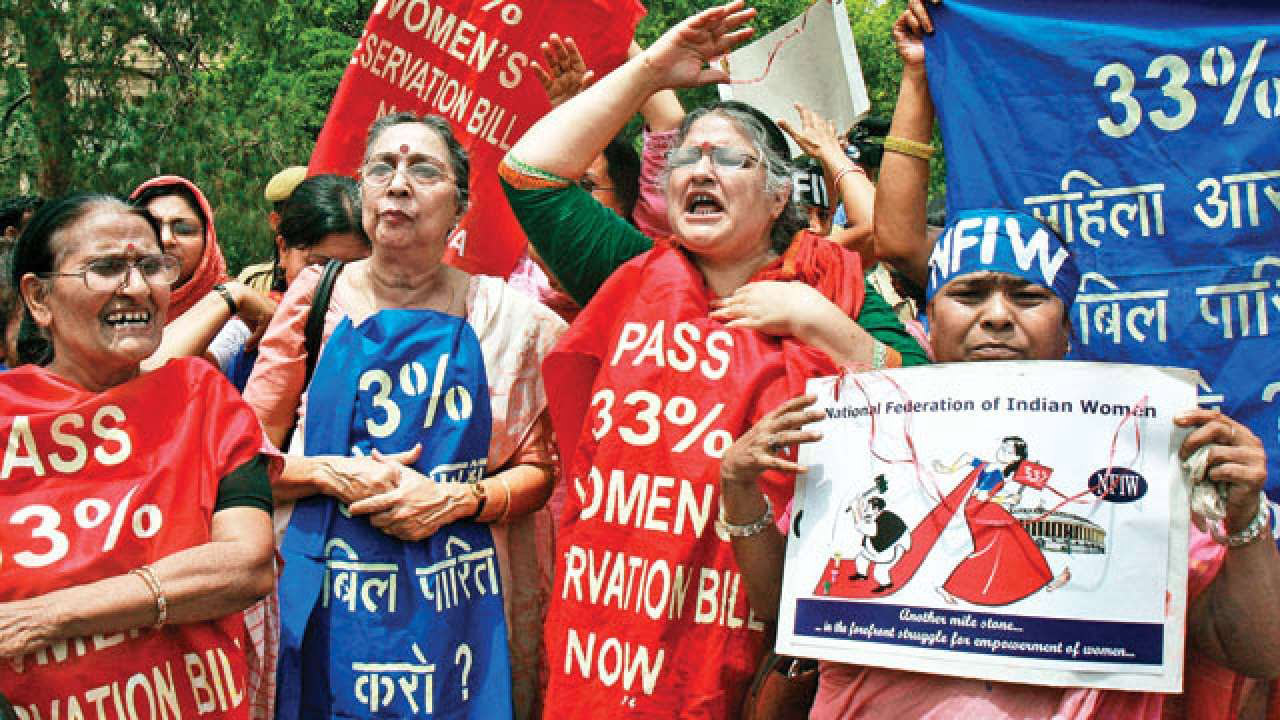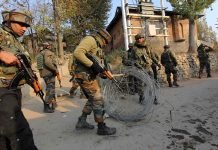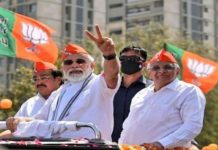
There is a glimmer of a hope for the long-pending Women Reservation Bill with leaders of TMC and JD (U) demanding its introduction in the current session of parliament. Notably, SP and RJD, who were once staunch opponents of the bill, now favour the bill. A report by Amitabh Srivastva
The time for the long-pending bill for Women reservation in parliament seems to have come.
With a generational change in political leadership, most evident in the Samajwadi Party and the Rashtriya Janata Dal, there is hope that this winter session could complete the task that was started by the United Front Government of Deve Gowda in 1996.
Later, the bill that promises one third seats in Lok Sabha and State Assemblies for women was introduced again in 1998, 1999 and 2008 amidst frayed tempers and attempts to tear the bill in the house. It was finally passed by the Rajya Sabha in 2010 and sent to Lok Sabha but it lapsed when the Lok Sabha term was over in 2014.
Hopes about the bill have brightened with leaders of various opposition parties such as the TMC and JD (U) demanding its introduction in the current session of parliament.
Old timers recall a time when Mulayam Singh Yadav and Lalu Prasad Yadav were so hostile to the idea of women reservations that the Congress was mortally scared of introducing the Bill fearing that their supporters would tear the Bill.
There was a time when Union Minister Renuka Chowdhury literally pushed away a Samajwadi Party member as he tried to snatch a copy of the bill from then law minister HR Bhardwaj. He had to take his seat between two women ministers to ward off these attacks.
But now that Akhilesh Yadav has taken over the reigns of SP (whose wife Dimple Yadav is all set to enter the Lok Sabha after a resounding victory from Mainpuri) and Tejashvi Yadav in the RJD the perspective towards women has undergone a sea change. Sharad Yadav of the JD(U) was another bitter critic of the move but his party MP Rajiv Ranjan is now all for the bill. Priyanka Gandhi of the Congress was the only leader to give a call for ‘Beti Hoon Lad Sakti Hoon’ in the last elections in Uttar Pradesh, even though it did not work for them but it did vibe well with leaders like Mamata Banerji who gave maximum tickets to vocal women in the TMC.
With barely 14.3 per cent women in Parliament, India lags way behind countries like Rwanda (61 per cent), Cuba (53 per cent),Nikaragua (51 per cent),Mexico (50 per cent) and the United Arab Emirates (50 per cent) women representation.
Another 27 countries have got more than 40 per cent representation including 15 countries in Europe, five in Latin American and the Caribbean, five in Africa, one in Asia and one in the Pacific.
More than two-third of these countries have officially declared gender quotas which allows a scope for gender equality.
India however did permit gender-based reservations much earlier in local government (Panchayats) because it did not seem a big deal to politicians who thought they were controlling the bigger budget strings.
That is the problem with India.
There is no guarantee that even if women have the numbers with them they would be able to bring about a change in perception.
For instance, the current BJP government led by Modi has the largest number of women ministers since Independence.But are they making an impact collectively?
Some recent examples should prove. Only very recently, on August 15, 2022 to be precise, criminals arrested in the infamous Bilkis Bano case in Gujarat were released after spending years in jail for serious offences like murder and rape.They were not only released sending shock waves across the country, but were also welcomed with Tilak and Arti by their family members as if they had returned after winning a war.
This should have brought an instinctive repulsive reaction from the women parliamentarians of the ruling party. But nothing of the sort happened.
And that tells a story. Does that mean that women think the same way as men? Both yes and no.
When we talk about major issues affecting their personal choices they tend to support their families even if they are criminals.
In the much abhorred honour killings for instance, the women heads of families belonging to the Khaps are much more cruel than their male counterparts about interfaith or out of caste marriages.
In most patriarchal families in rural India the women think the same way as the male members in deciding whether girls have to be sent to co-ed institutions for studies.The fears and biases that have been imbedded in their minds minds for decades will not go away so easily though perceptions have started changing slowly as women achievers in sports and other fields are winning international laurels.
On the plus side, women do have different priorities as far as public issues are concerned.
At a program to train the elected women Panchayat Chiefs (Mukhiyas who have come through reservations) in Rajasthan about five years ago, I had the chance to interact with many of them for three days in as many as nine sessions and we could notice how their minds worked differently than men.
Even though much against the rules, all the women Mukhiyas attended the session accompanied by their husbands or the male elders in the family (they said they had to reach the training site on tractors driven by men) and the men were seated in the same room all through the interaction the women did have their different life values.
For instance, when we asked both men and women what they would do if they were given a certain amount of money for public spending, the men mostly said they would open Akharas, sports stadiums or banquet halls for marriages and other programs.
The women, on the other hand, wrote that they would set up maternity hospitals, health clinics or schools for girls with toilets for them (such an important issue in villages).
And after this they went back home on the tractors driven by their husbands, faces covered in long Ghunghats as if they were newly-wed wives.
It is this hidden side of their priorities that has to be brought to the fore if we want to see women empowerment in the real sense of the term.
A UN study has reported and I quote “research on Panchayats (local councils) in India discovered that the number of drinking water projects in areas with women led councils was 62 per cent higher than in those with men led councils.”
The study goes on to show there is hope that if women take their roles seriously. ” “Women demonstrate political leadership by working across party lines through parliamentary women’s caucuses – even in the most political combative environments – and by championing issues of gender equality, such as the elimination of gender based violence, parental leave and childcare, pensions, gender equality laws and electoral reforms,” the study said.
These are significant issues for any country and in India each of these will be relevant in the coming years.
In India, women legislators have so far remained insulated from most of these issues, except for gender-based violence. But here too, they have followed the party directives which have normally not taken much interest in these issues even when specific issues related to women and children are discussed and debated.
The attendance record of both Houses of Parliament when bills on the amendment of Juvenile Justice Act, human trafficking or for lowering of the age of juveniles is discussed, will be an eye opener.
In most of these debates it is the women MPs who have come better prepared which is a very good sign.
But when the women get one-third seats in parliament under the new amendment in the 2024 elections they would be expected to take up a much more informed stand not only on gender issues but also on issues like electoral reforms where women have to be dependent on money power or Mafia power for making an entry.













